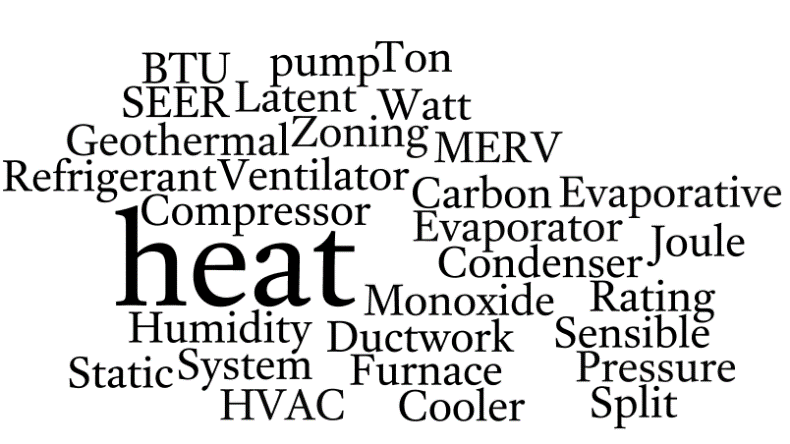 If you are in market for a new HVAC system or are having some repair done, you may get lost in the terminology that is used to describe how your system works. Here are some of the major terms that you may come across that can be confusing for the HVAC layman (HVAC stand for Heating, Venting, and Air Conditioning).
If you are in market for a new HVAC system or are having some repair done, you may get lost in the terminology that is used to describe how your system works. Here are some of the major terms that you may come across that can be confusing for the HVAC layman (HVAC stand for Heating, Venting, and Air Conditioning).
[hr]
Common HVAC Terms
- SEER – This acronym stand for Seasonal Energy Efficiency Ratio and is used to gauge the efficiency of an HVAC unit. The rule of thumb is that the higher the SEER rating the more efficient the system.
- Compressor and Condenser – These two can are easily confused due to their names. The compressor “compresses” gas by diminishing its volume. This effect allow the cooling requirements in an HVAC system to be achieved and maintained. The condenser transfers heat from an air conditioning unit by condensing gas to its liquid form.
- Evaporator – In similar fashion to a condenser, an evaporator absorbs heat it has captured. Evaporators are usually positioned at critical points where the HVAC unit needs to be cooled. A usual location for evaporators are above or below furnaces.
- Refrigerant – This liquid chemical is specifically used in HVAC units due to its cooling effect. It is also known as Freon.
- Ton – The cooling capacity of an air conditioning unit is measure by this unit.
- Split System – Some structures have HVAC units that are comprised of components located inside and outside. These are known as split units or split systems.
Knowing these terms can help you to have a better understanding of what type of repair or HVAC system is required for your home or business.
Third Generation HVAC offers comprehensive heating system & air conditioning repair including energy audits and air leak checks. We also handle commercial air conditioning repair and can help you with HERO financing. Third Generation HVAC is a professional air conditioning contractor Call us if you are experiencing higher energy bills that are unexplained.
